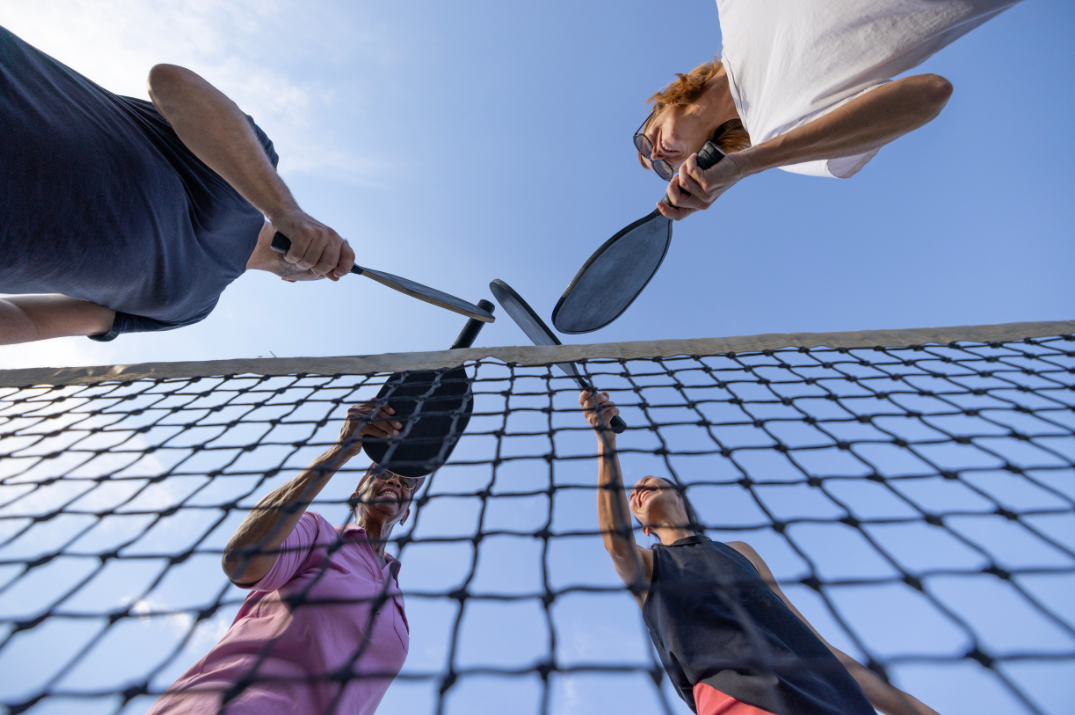Master the Pickleball Court: Your Guide to Injury-Prevention through Comprehensive Athletic Training

Stepping onto a pickleball court, a sport that's gained significant traction in recent years, comes with its own set of unique challenges and potential risks. The allure of pickleball, which combines elements of tennis, badminton, and table tennis, has seen many enthusiasts jump onto the court without sufficient preparation. The result? A surge in pickleball-specific injuries that reinforces the urgent need for comprehensive athletic training.
While pickleball is perceived as a low-impact sport compared to some of its racket sport counterparts, this does not exempt players from injuries. According to a report from the USA Pickleball Association, there has been a noticeable uptick in pickleball-related injuries as the sport has gained popularity. The swift side-to-side movements, rapid changes in direction, and repetitive arm actions can lead to a variety of injuries, particularly in players who haven't undergone appropriate training. Among the most commonly reported injuries are ankle sprains, wrist and elbow tendinitis, knee injuries, and shoulder strains.
These statistics underline a critical aspect of pickleball: like any sport, it demands a tailored approach to training and conditioning. The rapid pivots, quick reflex actions, and the necessity for agility make it imperative for players to ensure their tendons, ligaments, muscles, and proprioceptive senses are in optimal condition before they step onto the court. Without this preparation, the risk of injuries, as evidenced by the increasing incidence rates, remains significantly high. The essence is clear: embracing pickleball without adequate athletic preparation is a recipe for potential physical setbacks. Proper conditioning not only elevates gameplay but also acts as a shield, protecting enthusiasts from the brunt of common pickleball injuries.
Proprioception: The Silent Guardian
Proprioception stands as the silent custodian of our bodily movements. This vital ability of the body to perceive its position and movements in space acts as an unsung hero in preventing falls and missteps, which are common precursors to injuries on the court. Training that enhances proprioception can significantly avert these pitfalls, fostering more precise and safer movements during play. Balance and agility exercises, integral components of a robust training regimen, fine-tune one's proprioceptive abilities, enabling mastery over complex movements and techniques, and thereby separating proficient athletes from novices.
Strengthening Tendons and Ligaments: The Stalwart Anchors of the Body
Tendons and ligaments, the often-overlooked components of our musculoskeletal system, act as resilient connectors between muscles and bones. Without sufficient conditioning, these structures are left vulnerable to strains and tears, common injuries that can hamper an athlete's journey. A regimen encompassing resistance training could foster resilience in these tissues, making them better equipped to withstand the high-impact actions intrinsic to sports like pickleball, thereby significantly reducing the chances of injuries.
Cardiovascular Training: The Beating Heart of Athleticism
Cardiovascular health, the cornerstone of athletic training, nurtures the heart and lungs to support sustained physical activity efficiently. Enhanced cardiovascular conditioning fosters stamina, empowering athletes to maintain peak performance levels throughout the game while ensuring quicker recovery, reducing the risk of cardiac events and other health complications that may arise from sudden, intense activity.
Muscular Fitness: Crafting Power and Grace
Muscles, the dynamos that fuel movement, require meticulous nurturing to bear the brunt of intense sporting engagements. A well-rounded training program, emphasizing not just muscle strength but also flexibility and agility, ensures that muscles can endure the dynamic actions involved in pickleball, minimizing the risk of sprains, strains, and other muscular injuries. Moreover, muscular training fosters a harmonious synergy between different muscle groups, creating a milieu of graceful, efficient, and powerful movements on the court.
Furthermore, a comprehensive training approach transcends the physical realm, fostering mental resilience and focus. It crafts athletes who approach the court with not just a body primed for action but also a mind sharpened to strategize, adapt, and conquer. A well-trained athlete embodies a spirit of respect - for oneself, the sport, and fellow competitors - championing a discipline that reveres dedication and a relentless pursuit of excellence.
Dovetailing with scientific research, the imperative for such training becomes glaringly evident. A study published in the "British Journal of Sports Medicine" in 2016 undertook a systematic review of 14 studies, concluding that neuromuscular and educational interventions were potent in reducing the number and severity of sports injuries. Particularly, neuromuscular training, which amalgamates elements of strength, balance, and proprioceptive training, demonstrated a significant propensity to curtail sports-related injuries. This data robustly substantiates the notion that athletic training is not a mere luxury, but an essential component in preventing injuries, fostering not only an enhanced performance but also a safer, more enjoyable sporting experience.
In summation, the clarion call to train like an athlete, if one intends to "act" like an athlete, rings with undeniable truth and urgency. It advocates for a commitment that starts much before one steps onto the court, a journey of transformation into a beacon of resilience, determination, and excellence. It is the pathway that not only leads to victory on the court but also fosters a deeper, more fulfilling engagement with the dynamic, exhilarating world of sports, securing a sanctuary where individuals can thrive, unfettered by the shadow of preventable injuries. It is, truly, the embodiment of the ethos of sportsmanship, a homage to the sport, and a tribute to the indomitable spirit of athleticism.
